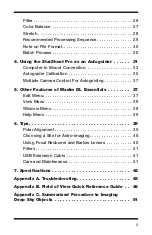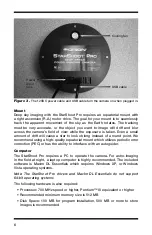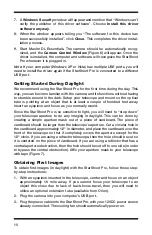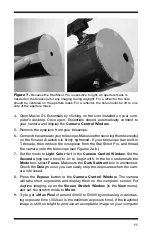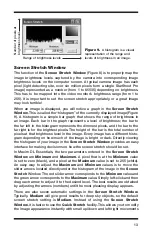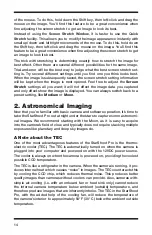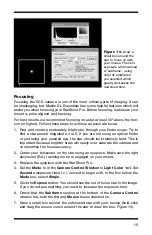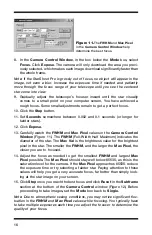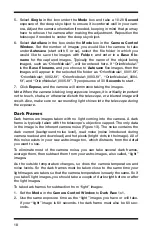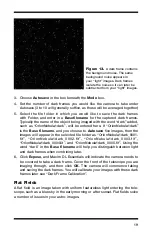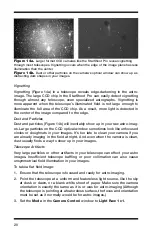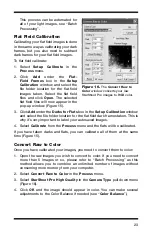
17
Caution: Once you have achieved focus, be sure to click the
Reset
button at
the bottom of the camera control window, otherwise the camera will crop all
your images into a small square!
Imaging Deep Sky Objects
Capturing impressive images of deep sky objects, such as galaxies, nebu-
lae, and star clusters, require long exposures. You will take several individual
images and stack them together to form one high-quality resultant image, just
as you would with planetary imaging. But while planetary images are formed
by stacking many exposures of less than 5 seconds, deep space images will
generally be comprised of individual images of a minute or longer!
Note that the StarShoot Pro is also capable of capturing planetary images. To
increase the image scale of the planets, a barlow lens is recommended. See
“Tips – Using Focal Reducers and Barlow Lenses”.
Very accurate polar alignment is essential for deep sky imaging. Stars will
streak across the field of view without precise polar alignment and tracking.
Longer exposures of 60 seconds or more also require autoguiding with a
separate camera. The Orion StarShoot AutoGuider can be operated with the
StarShoot Pro in MaxIm DL Essentials.
To start:
1. Acquire and center the deep sky object into the field of view of your eye-
piece. If you are using a mount with an accurate computerized go-to sys-
tem, you can keep the camera installed in your telescope’s focuser without
using the eyepiece.
2. Remove the eyepiece and replace it with the StarShoot Pro.
3. Set the
Mode
to
Light Color 1x1
and precisely focus the camera by using
the telescope’s focus knob and the
Focus
setting in the
Camera Control
Window
. If necessary, move the telescope to a nearby star to determine
the best focus. (Refer to “Focusing”)
4. For best results, set the
Mode
to
Light Raw 1x1
after you have reached
focus. Use the
Medium
setting in the
Screen Stretch Window
Figure 12.
Click
Reset
in the
Subframe
box after you have achieved focus.

